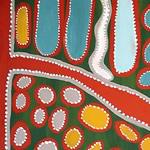Indigenous climate culture
04 July 2012
For 50 000 years Aboriginal tribes and communities have observed how plants, animals and the landscape react to weather. These observations, combined with survival methods and dreamtime spirituality, led to the development of a unique Aboriginal climate culture. This climate culture, with an underlying philosophy that all things are connected, is the basis of Indigenous weather knowledge.
An example of connections in climate culture is how a close affinity was observed between snakes and water. These observations are found in dreamtime stories of the rainbow serpent, which is believed to have lived in waterholes and controlled this life-giving resource.
The seasonal cycles described by various Aboriginal peoples differ according to location and, more than often, don't match the traditional four seasons of the European calendar. This is reflected in Indigenous weather calendars that can include up to seven seasons.
Influence of the ice age
Climate culture was heavily influenced 20 000 years ago by the ice age—which lasted around 5000 years during Aboriginal settlement of Australia.
Indigenous weather knowledge and culture absorbed the dramatic changes in the continent's climate with drops in temperature, rainfall and sea levels—and cold and dry winds.
The landscape of the continent also changed, with Tasmania and Papua New Guinea separating from mainland Australia. These extreme environmental changes had adverse effects on the Aboriginal population, plants and animals.
When temperatures again began to rise 14 000 years ago, plant and animal populations returned to the levels of earlier days and Aboriginal people once again inhabited much of the continent. Indigenous weather knowledge and culture retained the lessons of the ice age for centuries after.

Painting by Phyllis Ningarmara of the Miriwoong People.
Climate culture today
Weather knowledge and climate culture continues within Indigenous communities across Australia—and the Bureau's Indigenous Weather Knowledge platform helps preserve our Indigenous people's lasting relationships with the environment, weather and climate.


Comment. Tell us what you think of this article.
Share. Tell others.